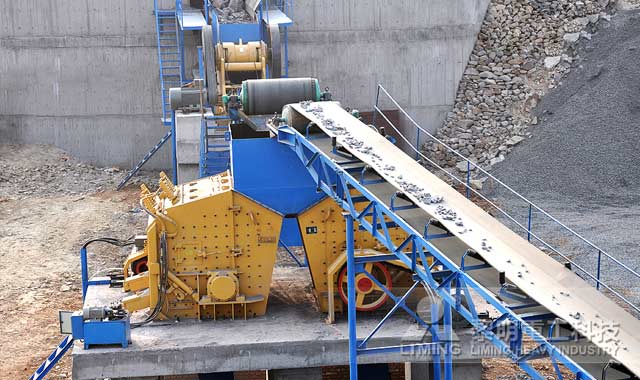A fixed crushing station, also known as a fixed crushing plant or stationary crushing plant, is a facility designed to crush and process hard minerals, rocks, and other materials to produce aggregate or other desired end products. These stations are typically located at quarries, mines, or construction sites where large quantities of raw materials need to be processed. The features of a fixed crushing station are crucial in determining its efficiency, productivity, and overall performance. In this context, let’s explore various features of a fixed crushing station:

- Primary Crushing Equipment:
- A fixed crushing station typically includes a primary crusher, which is the first stage in the crushing process.
- Common types of primary crushers include jaw crushers, gyratory crushers, and impact crushers.
- Secondary and Tertiary Crushers:
- These crushers follow the primary crusher to further reduce the size of the material.
- Secondary and tertiary crushers play a crucial role in achieving the desired particle size and shape.
- Feeding System:
- An efficient feeding system ensures a continuous and even flow of material to the crushers.
- Vibrating feeders or apron feeders are commonly used to control the rate of material feed.
- Screening System:
- Screens are employed to separate the crushed material into different sizes.
- Proper screening is essential for achieving uniform product sizes and meeting specifications.
- Conveying Systems:
- Conveyor belts transport material between different stages of the crushing process.
- Well-designed conveyor systems enhance the efficiency of material handling and reduce manual labor.
- Control System:
- Modern fixed crushing stations are equipped with advanced control systems.
- Automation allows for better monitoring, control, and optimization of the crushing process, leading to increased efficiency.
- Dust Suppression and Ventilation:
- Dust control measures, such as spraying water or using dust collectors, are essential for maintaining a safe working environment.
- Proper ventilation systems help disperse dust and maintain air quality.
- Power Supply and Energy Efficiency:
- Reliable power supply is critical for continuous operation. Fixed crushing stations are usually connected to the electrical grid.
- Energy-efficient equipment and design contribute to sustainability and operational cost reduction.
- Accessibility and Maintenance:
- Adequate access points and platforms are designed for easy maintenance and repairs.
- Regular maintenance is crucial for the longevity and optimal performance of crushing equipment.
- Safety Features:
- Safety is a top priority in crushing station design. Emergency stop buttons, guards, and safety signage are implemented.
- Training programs ensure that personnel are aware of safety protocols and procedures.
- Environmental Considerations:
- Fixed crushing stations should comply with environmental regulations.
- Measures such as water containment systems and noise reduction technologies contribute to minimizing environmental impact.
- Modularity and Scalability:
- Some fixed crushing stations are designed with modularity in mind, allowing for easy expansion or modification as production needs change.
- Remote Monitoring and Control:
- Remote monitoring capabilities enable operators to oversee the crushing process from a centralized location.
- Remote control features enhance operational flexibility.
The features of a fixed crushing station are centered around its stationary design, efficient material processing capabilities, control and automation systems, environmental considerations, and safety measures. These features collectively contribute to the reliability and productivity of the crushing operation.
